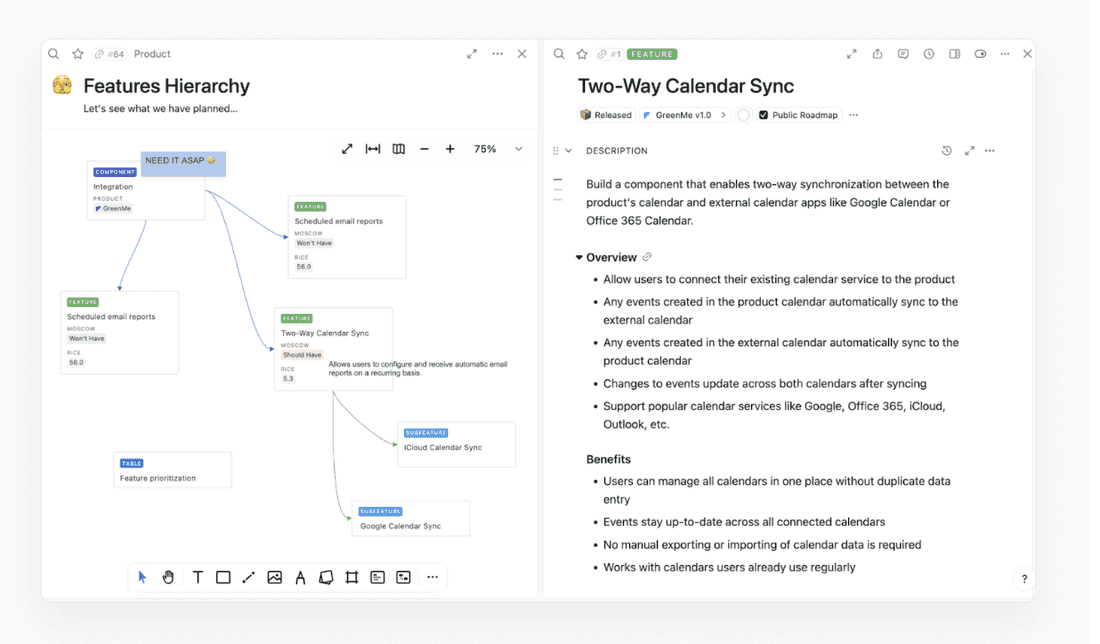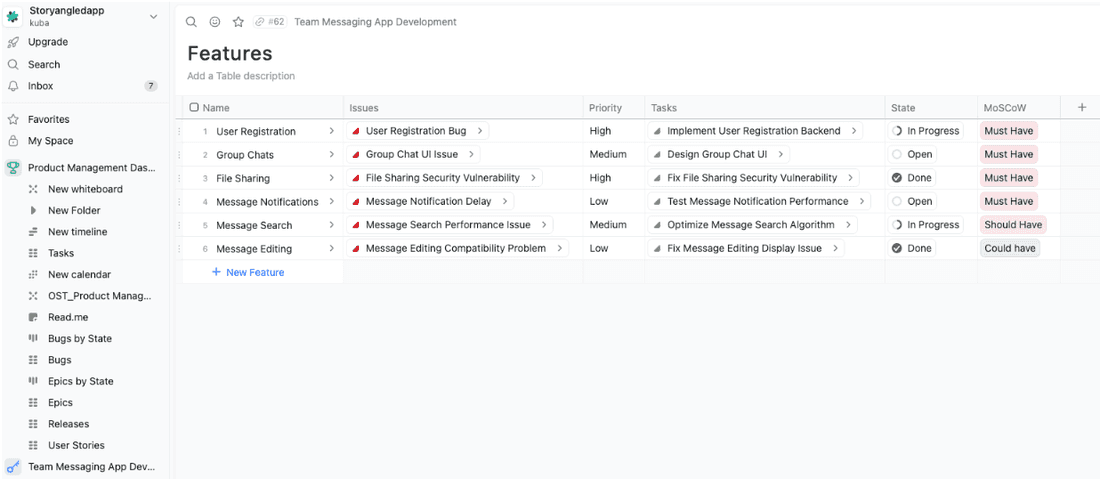Building a Product Roadmap for Startups in 4 Simple Steps
Your startup is gaining traction. You’ve got funding, a team buzzing with ideas, and customers who love your product.
It’s time to turn this momentum into sustainable growth. But how are you supposed to set any plans or goals in such an unpredictable environment?
It still seems your product was just an MVP a couple of months ago.
That’s where a kickass startup product roadmap comes in. And in this article, we’ll show you how to craft one.
- What is a product roadmap? A roadmap outlines your product’s vision, direction, and priorities over time.
- Why you need one: A roadmap aligns your team, keeps stakeholders informed, and ensures your product evolves strategically.
- How to create yours: Let’s get into the good stuff!
How is a startup product roadmap different from a regular one?
Let’s be honest – roadmaps aren’t rocket science. Startup roadmaps aren’t vastly different from their traditional counterparts.
But there are key differences:
- Flexibility is key: Startups need to be able to pivot quickly. Your roadmap should be adaptable as market conditions shift or you learn from user feedback.
- Focus on the big picture: Don’t sweat the small details at this stage. You’re outlining milestones and major features, not every tiny task.
- Customer feedback is your compass: Stay laser-focused on what your target audience needs, and be prepared to adjust course accordingly.
If anything, you should simplify your roadmap if your product is in early growth stages. This will help you adapt if any sudden changes need to happen.
Creating the best product roadmap for your startup
Let’s break down the process into key steps:
Step 1: Define your product vision
Before you plan for the future, you need to know where you are today. The product vision helps you find an answer.
To define it, you need to answer the question: “Why are we building this in the first place?”
Clarifying the vision motivates your team, gets investors on board, and helps you steer clear of distractions.
Get your team in a room (virtual or otherwise) and dream big! Talk about competitors, market trends, and the change you want to create.
Pro tip: Fibery is awesome for fleshing out your vision, letting you link ideas, goals, and strategies visually:

Step 2: Identify your target audience
Who are you building this product for?
Be specific and go beyond the basic demographics. Identify:
- What are the problems your product solves?
- What drives your users to try a product like yours?
- How do they deal with their pain points before finding your product?
Understanding your ideal users will make sure you’re prioritizing the features that provide them with the most value. And if you don’t understand who you’re serving – you’ll end up with a product loved by no one.
Before crafting your roadmap, make sure you’ve built detailed customer personas. Conducting customer interviews and surveys will get valuable insights from the source.
Those insights can be later translated into epics in your product development.
Step 3: Prioritize ruthlessly
You’ve got a million brilliant ideas (we know!), but you can’t do it all at once.
Trying to do so is a recipe for burnout. Plus, your product will lack a clear identity – and nobody has time for bland products.
Focus on the features that align with your vision and have the biggest impact on your target audience.
Use prioritization methods like MoSCoW to connect the user needs for a feature with the effort you’ll need to put in to deliver it.
Fibery’s table view will give you a helicopter view of all features and facilitate comparison.

Step 4: Get visual and shareable
A roadmap isn’t helpful if it lives in a dusty spreadsheet. You need to create your roadmap in a format that’s easy to access and understand by everyone on your team.
A picture is worth a thousand words – especially for complex plans. Create a visual format (charts, timelines, you name it) to make the strategic connections clear and put everyone’s on the same page.
Focus on overarching themes and milestones – without getting into the nitty gritty. The roadmap should give an overall direction for the product and not a rigid plan.
Also, remember to make the roadmap easily sharable and editable. Your plans may change and you should be able to update your roadmap quickly.
The PM’s hot take
Crafting a startup product roadmap is like trying to navigate a rapidly changing maze blindfolded. It’s part art, part science, and a whole lot of educated guessing. Sure, we dress it up with strategic visions and customer insights, but at the end of the day, it’s about making bold bets with the agility of a cat ready to pounce in a different direction at the slightest hint of change.
Conclusion
A well-crafted product roadmap helps startups avoid getting lost in the weeds of day-to-day execution. By outlining your vision and priorities, you can make strategic decisions that fuel growth. Ready to start building your roadmap? Grab a (forever) free trial of Fibery and turn product dreams into plans.
Psst... Wanna try Fibery? 👀
Infinitely flexible product discovery & development platform.